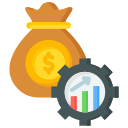Integrating KPIs and Analytics for Better Budget Management
Welcome to a practical, inspiring exploration of how integrating KPIs with analytics transforms budgeting from guesswork into a confident, data-driven routine. Today’s chosen theme: Integrating KPIs and Analytics for Better Budget Management.

Link KPIs to Strategic Outcomes
Avoid vanity metrics by mapping each KPI to a business outcome directly tied to your budget. If a KPI cannot influence spend or savings, reconsider it. This alignment prevents dashboard clutter and focuses conversations on measurable financial impact, not interesting but irrelevant trends.
Balance Leading and Lagging Indicators
Combine lagging outcomes like EBITDA or cost-to-serve with leading indicators such as sales pipeline velocity or procurement cycle time. Leading KPIs signal budget risks early, while lagging KPIs confirm results. The blend creates a feedback loop that supports proactive reallocation, not reactive scrambling.
Data Foundation: Your Budget’s Single Source of Truth
Unify Disparate Systems Without Losing Context
Integrate ERP, CRM, HRIS, and procurement data using consistent dimensions like cost center, product line, and region. Preserve transaction-level detail to support drill-down during variance analysis. Consistency eliminates reconciliation headaches and turns monthly close into a swift, confident ritual.
Define KPI Formulas and Guardrails
Codify KPI definitions, calculation windows, and exclusions in a shared catalog. Include version history and owners. When marketing changes attribution windows or operations updates standard costs, document it. Transparent rules keep trust high and prevent disputes during budget reviews or board meetings.
Automate Data Quality Checks
Set up anomaly detection for out-of-range values, missing cost centers, or sudden margin swings. Tag and route issues to owners automatically. A small investment in automated checks prevents expensive misinterpretations and stops teams from making budget moves based on broken numbers.
Dashboard Storytelling for Budget Decisions
Identify the three most frequent budget decisions executives make each month, then design views that answer them in one screen. If a chart does not influence a decision, remove it. Decision-first design shortens meetings and accelerates approvals for reallocations and cost optimizations.


Dashboard Storytelling for Budget Decisions
Keep consistent color codes for under, on, and over budget. Place KPIs in stable positions across reports. Provide sparklines for trend context and annotate material deviations. Familiarity allows leaders to scan quickly, focus on exceptions, and act decisively without lengthy explanations.
Forecasting and Scenario Modeling That Protects Your Budget
Move beyond straight-line projections. Tie revenue and cost forecasts to operational drivers like demand, capacity utilization, lead-to-close rates, and supplier index changes. When drivers move, your forecast reacts, helping you re-plan budget allocations quickly and credibly.

Variance Analysis That Drives Corrective Action
Use waterfall charts and driver trees to connect margin swings to unit economics, mix, productivity, or price. Separate noise from signal. This approach focuses teams on fixes within their control and avoids unproductive debates about macro factors no one can change.
Variance Analysis That Drives Corrective Action
Benchmark KPIs against peers, historical cohorts, or regions. When you frame variances contextually, corrective actions become obvious. A mid-market manufacturer cut procurement variance by 18% in three months after discovering a single supplier’s lead-time inconsistency was cascading into expedited freight.
Variance Analysis That Drives Corrective Action
Attach recommended actions to common variance patterns: renegotiate supplier terms, rebalance channel mix, or delay non-essential hires. Track playbook adoption as its own KPI. Celebrate wins publicly to reinforce the behavior and invite teams to share their fastest, repeatable fixes.
Culture, Governance, and Adoption: Make It Stick
Hold a short, recurring session where owners present two wins, one risk, and one experiment tied to their KPIs. Keep it constructive and specific. Rituals anchor habits, normalize transparency, and keep the budget a living agreement rather than a document collecting dust.

Anecdotes from the Field: Real Results, Real People

The CFO Who Shortened Close by Four Days
After unifying definitions and automating variance alerts, a CFO cut the monthly close from nine to five days. The surprise benefit was not speed alone; it was freeing leaders to act on fresh insights, rebalancing discretionary spend before small issues snowballed.

The Nonprofit That Stopped Guessing
A nonprofit tied program KPIs to grant budget lines and donor reporting. Scenario analysis clarified trade-offs between outreach and direct service delivery. The board gained confidence, approved a targeted expansion, and fundraising messaging improved because impact and cost were crystal clear.

The Plant Manager’s Win
By tracking scrap rate and machine uptime as leading KPIs, a plant manager justified a maintenance overhaul. The budget initially tightened, but within two quarters, overtime fell, throughput rose, and unit costs dropped. The team still jokes that the best savings were found in the wrench drawer.
